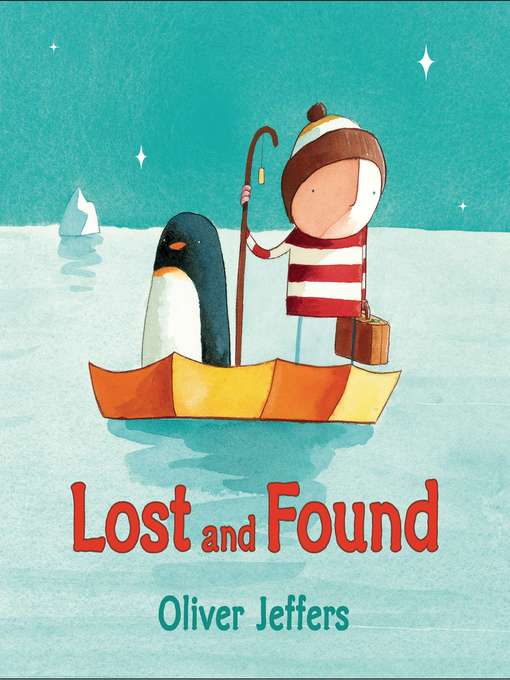
Lost and Found
فرمت کتاب
ebook
تاریخ انتشار
2005
Reading Level
0-2
ATOS
2.9
Interest Level
K-3(LG)
نویسنده
Oliver Jeffersشابک
9780698148789
کتاب های مرتبط
- اطلاعات
- نقد و بررسی
- دیدگاه کاربران
نقد و بررسی

jasmint - Good book it has some tips for simple life and kinda immature but still good book and cute, I love how does it describe it and see the things from another prespectives.

Starred review from January 2, 2006
This beguiling tale featuring the round-headed lad from Jeffers's debut book, How to Catch a Star
, begins, "Once there was a boy who found a penguin at his door." Enticing, spare text and watercolor pictures follow the earnest, red-and-white-striped shirt clad child's quest to help the sad-looking penguin find its way home. He checks with the Lost and Found Office ("But no one was missing a penguin") and futilely asks some birds and the rubber duck that shares his bath for guidance before reading (in a book drolly entitled Where Penguins Come From
) that his new friend hails from the South Pole. After making sure their rowboat is ship-shape, the two set out to sea, the child rowing south while telling stories to the rapt penguin, sitting in the bow, endearingly holding a striped umbrella over its head when the weather turns stormy. The prose reflects the hero's sudden sadness after he sees the bird home (there "was no point telling stories now because there was no one to listen except the wind and the waves"). Youngsters will cheer the pals' inevitable reunion and will likely request an immediate rereading of this gently humorous and heartwarming tale of friendship found, lost and regained. Ages 4-up.

January 1, 2006
PreS-Gr 2 - -Once there was a boy who found a penguin at his door. - From this opening line to the very end, this gentle story of friendship will capture young readers' imaginations. The child assumes that the penguin is lost, which is logical since the lumpy black-and-white bird does look awfully forlorn. Determined to help the creature find its way home, he discovers that penguins come from the South Pole, and the two board a rowboat. During their long sea voyage, the youngster passes the time by telling his companion many stories. However, when they finally reach their destination, he realizes that the penguin was not lost, but just lonely and looking for a friend. The soft watercolor paintings feature simple shapes and a palette that ranges from pale to bold. The boy has a square body, stick legs, and a round head with tiny dot eyes and an expressive mouth. For much of the tale, the characters are placed on crisp white backdrops, while colorful ocean scenes depict their journey. The text's subtle humor and the appealing visuals make this title a wonderful read-aloud." -Genevieve Gallagher, Murray Elementary School, Charlottesville, VA"
Copyright 2006 School Library Journal, LLC Used with permission.

December 15, 2005
PreS-K. On his doorstep, a little boy finds a penguin looking sad and lost, and he tries to help the wordless bird. When the boy discovers that penguins come from the South Pole, he takes his new friend there by rowboat, telling him stories along the way. He helps the penguin ashore and casts off. The penguin sadly watches him float away. Realizing his mistake, the boy returns for the penguin, misses him, finds him, hugs him, and takes him back in his rowboat. A sense of restraint underlies the illustrations, from the spare use of color to the isolation of the individual characters on the page. With clean lines and varied compositions, the watercolor paintings tell the story with a minimum of fuss but no lack of feeling. But unlike characters in the soppier sort of picture books on friendship, the boy and the penguin don't gush; they just quietly enjoy being together. With a succinct narrative text and a series of expressive illustrations, this is a fine choice for reading aloud.(Reprinted with permission of Booklist, copyright 2005, American Library Association.)

























دیدگاه کاربران